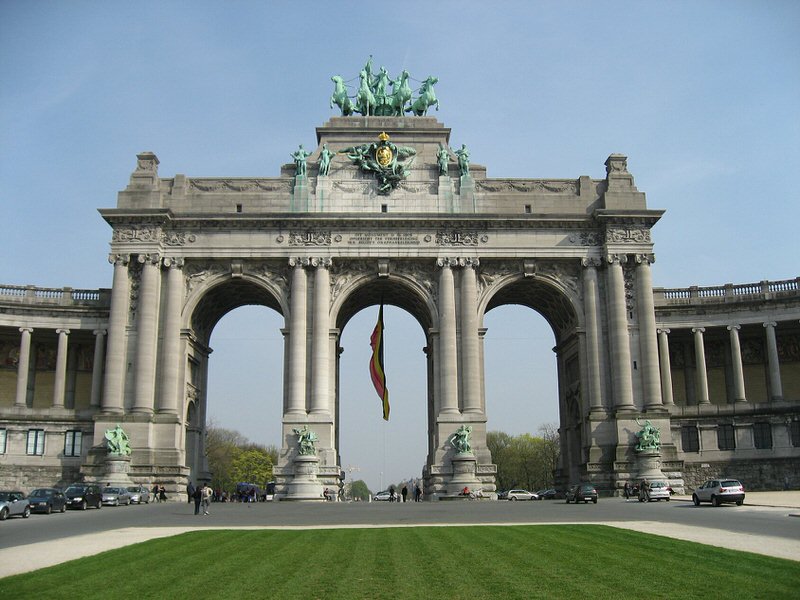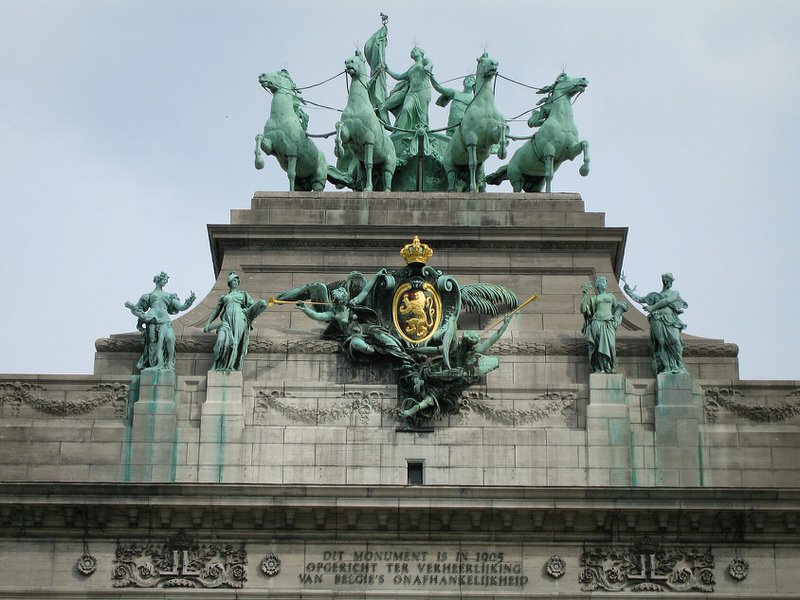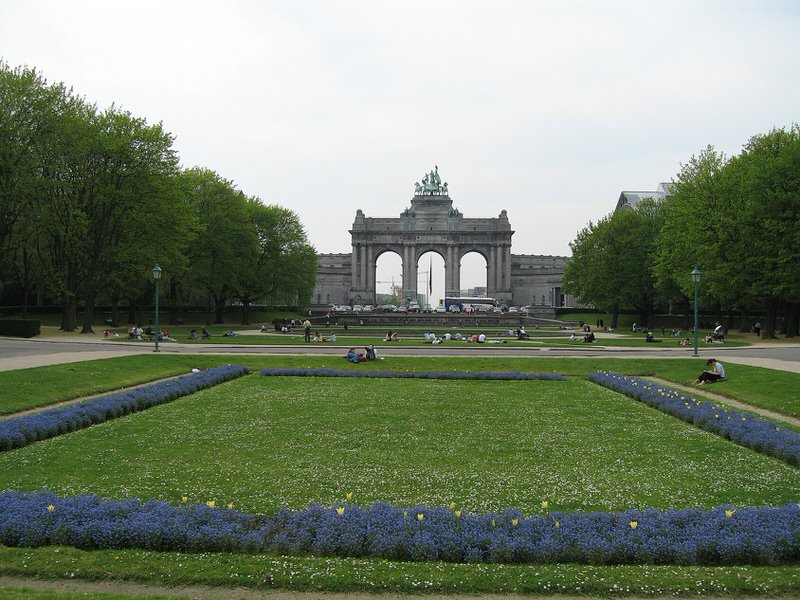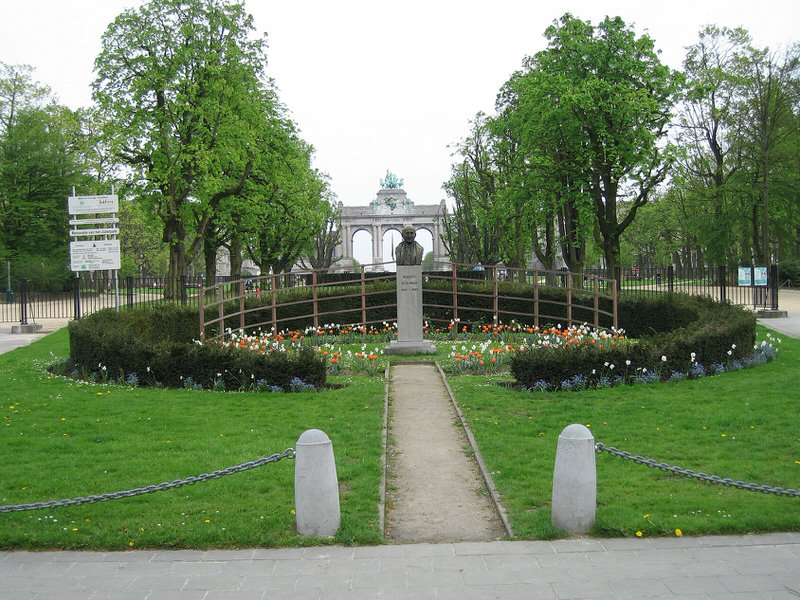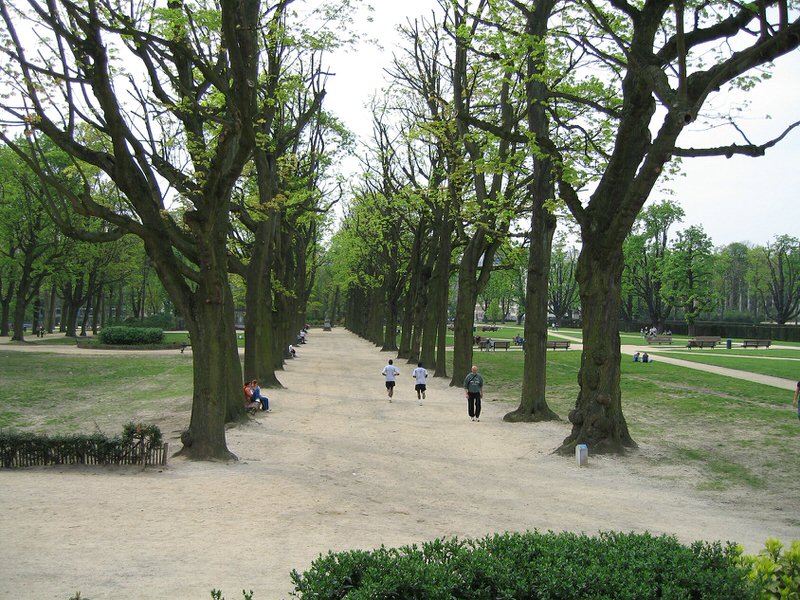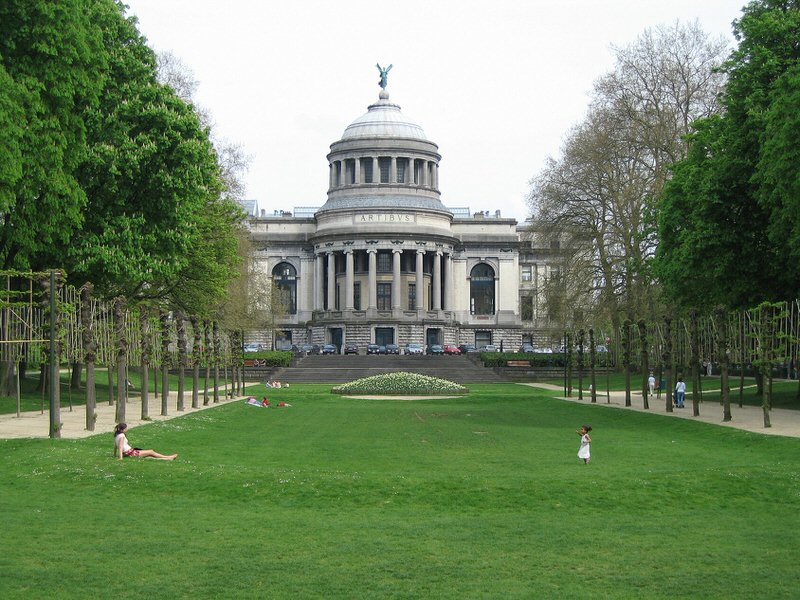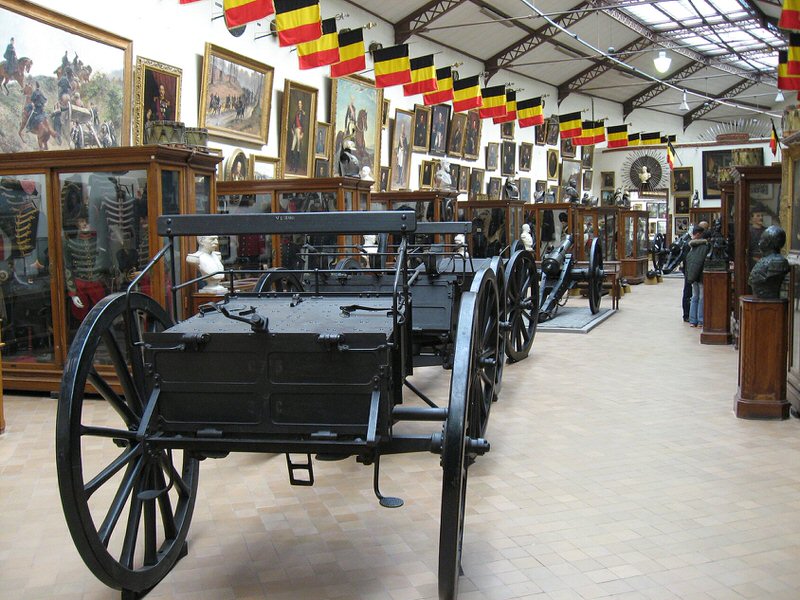Le CINQUANTENAIRE
A JUBILEE UNDER LEOPOLD II
Site and buildings
To celebrate the golden jubilee of the
On 20 June 1880 only the two wings were ready to house the National Exhibition for the Golden Jubilee of the Belgian nation. Only one of the two rose windows on the facade remains: the other was destroyed in 1946 when the Pavillon de I’Antiquité (Pavilion of Antiquity) was ravaged by fire: this was rebuilt 10 years later in a style which, although different, nevertheless respected the overall symmetry of the building. The colonnade was completed in 1888 and the mosaics added in 1920. In 1897 the site was used for the World Fair. The rear halls, whose metal structure was intended to reflect the technology of the times, were then added. The arches alone required eight months’ work (1904-05) and were built by the Frenchman Charles Girault (1851‑1932), whom the king had met at the World Fair in
Details of the cinquantenaire
Cinquantenaire from a distance
In 1888. Gédéon Bordiau conceived the idea of a comprehensive museum. The idea naturally appealed to the ambitious views of Leopold who wanted to give his country an image in keeping with the European power it had become during his reign. The cinquantenaire (
Park
Entrance of the park of the cinquantenaire
Inside of the cinquantenaire
The park, designed by Gédéon Bordiau, is the suburban equivalent of the Parc de Bruxelles, or
View of the Musée du Cinquantenaire from the park
There are various monuments. In 1889 Victor Horta built the Pavillon des Passions Humaines, a small open temple-like construction dedicated to human passions which, although still somewhat removed from Art Nouveau, already shows a certain mastery of this type of architecture which was soon to achieve universal renown. The pavilion was created for the sculpture of the same name by Jef Lambeaux. It was soon walled up, however, initially at the request of the authorities who considered it to be immoral, and also at the request of Lambeaux, who believed that his sculpture was not being shown to advantage by the zenithal lighting designed by Horta. Closed after three days, the pavilion has never been finished. Several sculptures lie along the path, including Le Faucheur by Constantin Meunier, Les Bâtisseurs de villes by Charles van der Stappen, and allegories of the seasons at the western entrance. The small
Musée royal de l’Armée et de I’Histoire militaire
The
Musée royal de l’Armée et de I’Histoire militaire (click HERE to enter)

